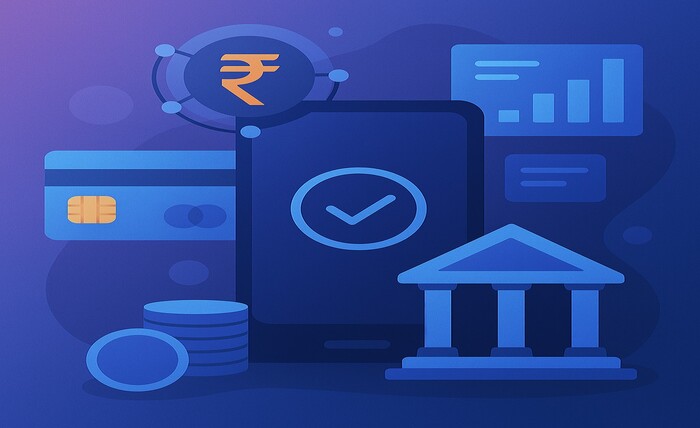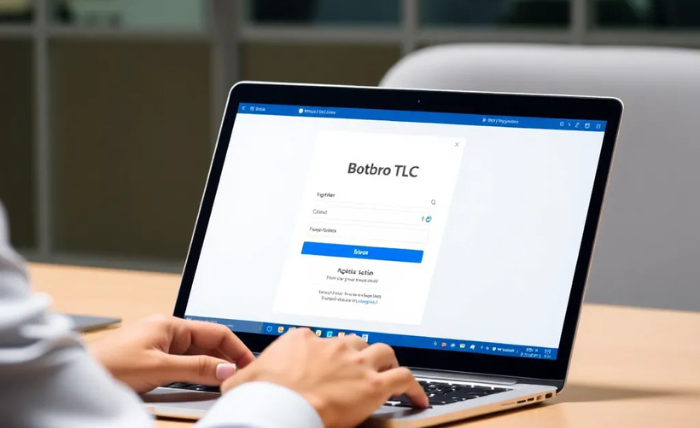The world of digital payments has transformed dramatically over the last decade, especially in India, where rapid innovation has reshaped how users and merchants interact with financial systems. Yet, even with this evolution, many businesses still face core challenges when using traditional payment gateways—slow processing, inconsistent success rates, delayed settlements, and frequent technical failures. In response to these long-standing issues, the 印度原生 payment system has emerged as a powerful alternative, offering stability, speed, and a smooth payment experience that outperforms conventional systems on multiple fronts.
This guide explores exactly why businesses prefer the Indian Native payment system over traditional gateways, how it works, what makes it faster and more reliable, and why this locally optimized ecosystem is becoming the foundation for India’s modern digital economy.
Introduction: The Rise of Indian Native Payments
Over the years, India’s digital payment landscape has grown rapidly, fueled by mobile adoption, internet access, and government-driven digital initiatives. However, this growth has also highlighted the limitations of traditional payment gateways—systems that were never designed for India’s complex, high-volume banking environment.
Traditional gateways often rely on outdated processes, multi-step integrations, and indirect routing paths. As a result, they struggle during:
- festive season traffic
- salary-day spikes
- gaming or high-volume events
- wallet-to-bank settlements
- backend banking congestion
To solve these inefficiencies, the Indian Native payment system was developed as a tailored solution specifically designed for Indian banking behavior, local transaction logic, and user expectations.
Businesses soon realized the advantages. Today, thousands of merchants—from major e-commerce companies to new digital startups—are switching to Indian Native systems simply because they work better for India’s environment.
What Makes the Indian Native Payment System Different?
Before comparing both models, it’s important to understand what makes Indian Native integration unique. Unlike traditional gateways that rely on generic global infrastructure, the Indian Native model is built from the ground up to serve Indian markets.
Key Characteristics
- Optimized routing for Indian banks
- Increased reliability during peak traffic
- Same-day or next-day settlements
- Simpler and faster integration
- Advanced multi-layer fraud protection
- Low-cost operations
- High-availability servers
Traditional gateways try to apply a universal payment structure worldwide. The Indian Native system, however, is a localized solution built specifically for India’s speed, security, and scalability requirements.
Speed: Why Indian Native Outperforms Traditional Gateways
Speed is one of the most important reasons merchants prefer the Indian Native system. The faster a transaction is processed, the higher the conversion rate.
Instant Payment Processing
Indian Native transactions typically complete in seconds.
Traditional gateways often experience delays due to:
- global routing
- external verification layers
- overloaded banking nodes
Real-Time Bank Switching
If one bank node slows down, Indian Native automatically reroutes the transaction to a faster channel. Traditional systems do not offer this level of dynamic routing.
Reduced Server Overheads
Indian Native systems carry less backend weight because they use lightweight APIs and optimized request formats. Traditional gateways still use legacy formats, slowing down response times.
High-Speed Architecture
The Indian Native infrastructure is distributed across multiple data centers for ultra-low latency communication.
Speed alone can increase business revenue significantly—and this advantage makes Indian Native a preferred choice.
Higher Success Rates Than Traditional Gateways
Every payment failure is a lost customer. Traditional gateways, especially those integrating globally, often experience higher transaction failures. The Indian Native system drastically improves success rates.
Adaptive Routing Technology
If a particular payment path becomes slow, Indian Native automatically adjusts routing.
Traditional gateways use fixed, non-adaptive paths.
Direct Bank Connectivity
Indian Native reduces failures by minimizing third-party intermediaries.
Traditional gateways may involve multiple institutions, increasing points of failure.
Localized Transaction Logic
Optimized Retry Mechanisms
Even if a payment attempt fails, Indian Native retries intelligently without damaging user experience.
Traditional gateways often require manual retries.
These improvements lead to a consistently higher success rate.
Superior Settlement Cycles: A Major Advantage
Merchants need money quickly to manage cash flow, reinvest in stock, pay vendors, or run advertisements. The Indian Native system offers faster settlement than traditional gateways.
T+0 and T+1 Settlements
Indian Native systems often settle funds on the same day.
Traditional gateways may take 2–4 days or more.
Transparent Settlement Reports
Indian Native dashboards show live settlement status, reducing accounting complexities.
Automated Reconciliation
The system automatically matches transaction records with bank deposits.
Traditional systems require manual reconciliation.
Predictable Cash Flow
Businesses can operate smoothly without waiting days for releases.
Faster settlements are one of the biggest reasons merchants switch to Indian Native solutions.
Unmatched Stability During High Traffic
Festivals, flash sales, and peak hours can overwhelm traditional gateways. Indian Native systems are built to handle India’s high-volume traffic effortlessly.
Scalable Cloud Infrastructure
Indian Native platforms add capacity automatically based on load.
Traditional gateways often struggle during spikes.
Continuous Uptime
Indian Native systems emphasize 99.9% uptime or higher.
Multi-Bank Redundancy
Even if one banking system fails, traffic reroutes instantly.
Event-Ready Payment Processing
E-commerce sales, gaming tournaments, ticket launches—Indian Native stays stable.
For platforms with unpredictable traffic patterns, Indian Native provides unmatched reliability.
Lower Fees and Cost Efficiency
Businesses value systems that reduce costs without sacrificing performance. Indian Native offers more affordable processing compared to traditional gateways.
Transparent Fee Structure
- no hidden fees
- no international routing charges
- simple pricing
Traditional gateways often include:
- cross-border charges
- platform fees
- conversion fees
Lower MDR (Merchant Discount Rates)
Indian Native offers cost-effective MDR suitable for Indian merchants.
Savings on Failed Transactions
Higher success rate = fewer losses.
Less Technical Overhead
Lightweight APIs reduce server expenses.
Cost efficiency adds to why Indian Native is preferred.
Security: Indian Native’s Multi-Layer Protection
Security cannot be compromised in payment systems. Indian Native provides cutting-edge protection.
End-to-End Encryption
Every stage of the payment flow is protected with advanced encryption.
Risk-Based Authentication
AI models analyze:
- transaction velocity
- spender behavior
- device patterns
Tokenization
Sensitive user data is replaced with tokens.
Device Fingerprinting
Identifies fraudulent devices instantly.
Real-Time Fraud Prevention
Indian Native blocks suspicious transactions without disrupting legitimate ones.
Traditional gateways often use older security frameworks that are slower and less effective.
Simpler and Faster Integration for Developers
Developers love Indian Native systems because they are easy to integrate.
Developer-Friendly APIs
APIs are:
- lightweight
- well-documented
- easy to debug
Quick Setup Time
Businesses can go live in a few hours.
Traditional gateways require extensive setup.
Plug-and-Play SDKs
Ready-to-use modules for:
- Android
- iOS
- Web
- POS systems
Sandbox Testing Environment
Merchants can test before going live.
Integration simplicity reduces launch time significantly.
Better Customer Experience
A good payment experience directly affects conversions and revenue.
Fast Transaction Flow
Indian Native offers instant confirmation.
Fewer Payment Declines
Users prefer platforms where payments work the first time.
Smooth Checkout
Less friction = more completed purchases.
24/7 Availability
Users can pay anytime, even during non-banking hours.
Local Optimization: The Biggest Difference
Indian Native systems are built specifically for India’s:
- banking habits
- regional transaction behavior
- payment culture
- user preferences
- peak hours
- network performance
Traditional gateways can’t match this level of regional optimization.
Ideal for High-Volume Industries
Certain sectors rely heavily on instant, stable payments. These industries prefer Indian Native over traditional gateways.
E-commerce & Retail
High cart-abandonment issues due to delays are solved.
Gaming & Entertainment
Instant deposits and withdrawals keep users engaged.
Subscription Platforms
Recurring billing works flawlessly.
Service Marketplaces
Fast payouts help sellers and freelancers.
Logistics & On-Demand Services
Drivers and partners receive quick settlements.
How Indian Native Reduces Payment Failures
Payment failures damage business reputation.
Dynamic Bank Routing
Traffic finds the best-performing bank pathway instantly.
Real-Time Error Correction
Temporary network issues are handled automatically.
Retries Without User Intervention
Preventing user frustration.
Lower Gateway Timeouts
Advanced cloud architecture reduces timeout issues.
Merchant Dashboard and Analytics
The Indian Native dashboard provides advanced analytics.
Live Tracking
Monitor success rates, failures, refunds, and settlements.
Predictive Insights
AI identifies user patterns and revenue performance.
Settlement Summary
Clear breakdown of payouts.
Risk Alerts
Notifications for unusual activity.
This gives merchants more control and clearer visibility.
Why the Indian Native System Is the Future
The Indian Native ecosystem continues to evolve with new features.
Emerging Technologies
- AI settlement prediction
- blockchain for traceability
- instant push-to-bank payouts
Wider Bank Network
More local banks are being integrated.
Expansion into Multi-Currency
Future updates may support international channels.
Better Developer Tools
More SDKs, plugins, and automation modules.
Conclusion
The 印度原生 payment system has become the top choice for businesses seeking reliable, fast, and secure payment processing in India. Compared to traditional gateways, the Indian Native system offers:
- faster transactions
- higher success rates
- lower fees
- advanced security
- stable high-volume performance
- better customer experience
- faster settlements
- easier integration
As India continues to embrace digital transformation, the Indian Native payment system stands out as the smartest, most future-ready solution for businesses that want to grow without limitations.







